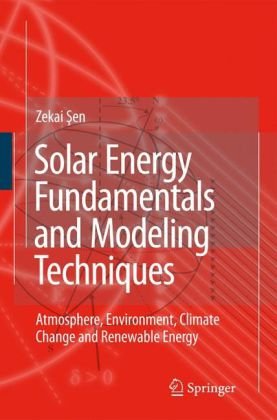

Most ebook files are in PDF format, so you can easily read them using various software such as Foxit Reader or directly on the Google Chrome browser.
Some ebook files are released by publishers in other formats such as .awz, .mobi, .epub, .fb2, etc. You may need to install specific software to read these formats on mobile/PC, such as Calibre.
Please read the tutorial at this link: https://ebookbell.com/faq
We offer FREE conversion to the popular formats you request; however, this may take some time. Therefore, right after payment, please email us, and we will try to provide the service as quickly as possible.
For some exceptional file formats or broken links (if any), please refrain from opening any disputes. Instead, email us first, and we will try to assist within a maximum of 6 hours.
EbookBell Team

5.0
68 reviewsSolar irradiation is the fundamental initiator of renewable energy alternatives, such as wind, wave, hydrogen and biomass energy sources. Solar Energy Fundamentals and Modeling Techniques presents methods for the quantitative determination of the amount of solar irradiation incident on a surface on the Earth. The book collects together material from the current literature in atmospheric environmental sciences, climate change research, meteorology, engineering and renewable energy, liberally illustrated by diagrams and worked examples.
Solar Energy Fundamentals and Modeling Techniques provides a sound background to the underlying physical principles of solar irradiation and energy, with explanations as to how these can be modeled and applied in solar energy projects and design. Bringing together information not found elsewhere in a single source, the book includes an innovative exposition of expert system methodologies used in the domain of solar irradiation and energy. In addition to methodologies such as statistics and geo-statistics (regionalized variables), new modeling approaches such as fuzzy logic inference, artificial neural network (ANN) and genetic algorithm techniques are introduced, along with both classical Kriging and newly developed techniques for spatial solar irradiation modeling.
Solar Energy Fundamentals and Modeling Techniques is a valuable resource for students, researchers and practitioners across a broad spectrum of disciplines, including energy analysts, thermal device designers, photovoltaic specialists, architects and engineers, agronomists, hydrologists, atmospheric scientists and meteorologists, climate change specialists, and environmentalists.
 
Springer would like to acknowledge that that this book has used material from Professor Tariq Muneer’s book, “Solar radiation and daylight models”, 2nd Edition, 2004 published by Elsevier. The following material from Muneer’s book has been used within this book. All figure, table and section numbers refer to Muneer (2004).
Figure 1.1.2
Figure 1.2.1
Table 1.2.2
Section 1.10
Section 1.10.1
Section 1.10.2
Section 1.10.3
Section 1.11
Figure 1.10.1
Figure 1.11.1
Section 1.11.3
Table 1.11.1
Section 1.11.4
Section 1.11.5